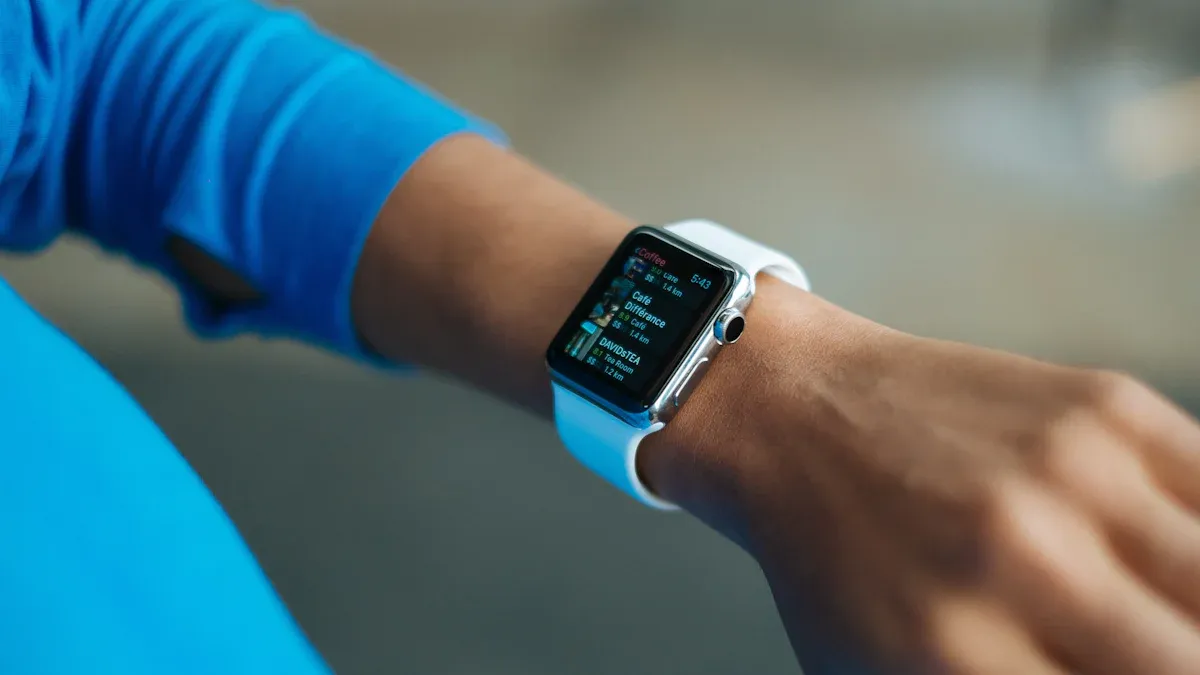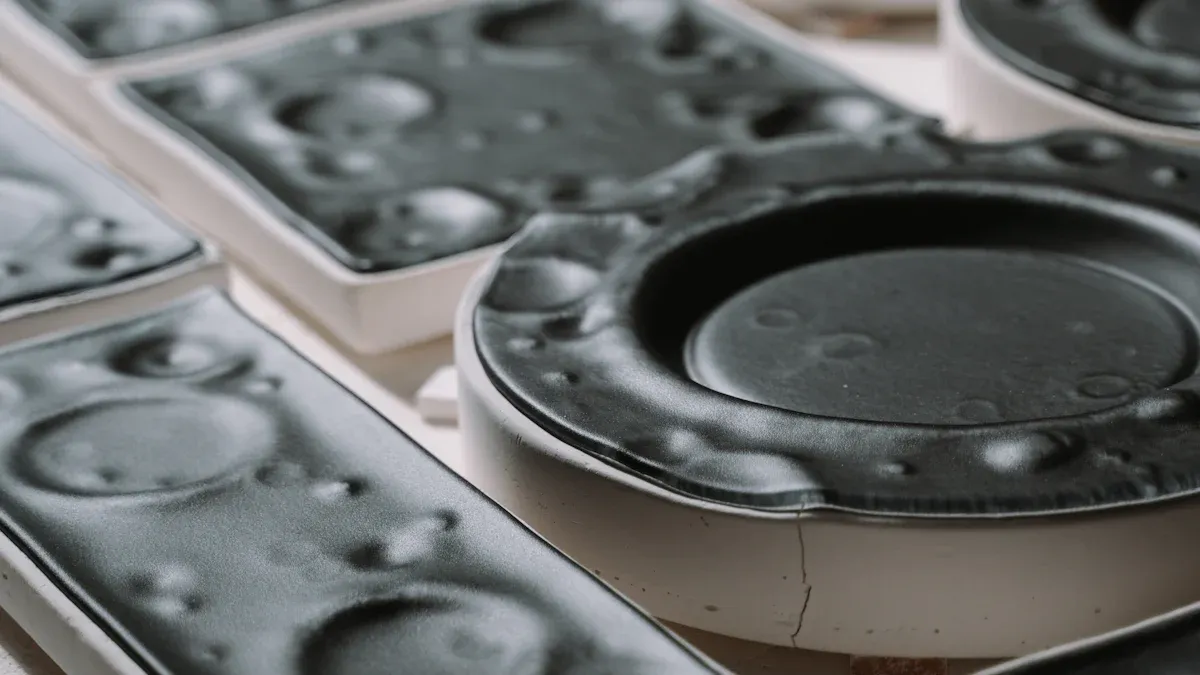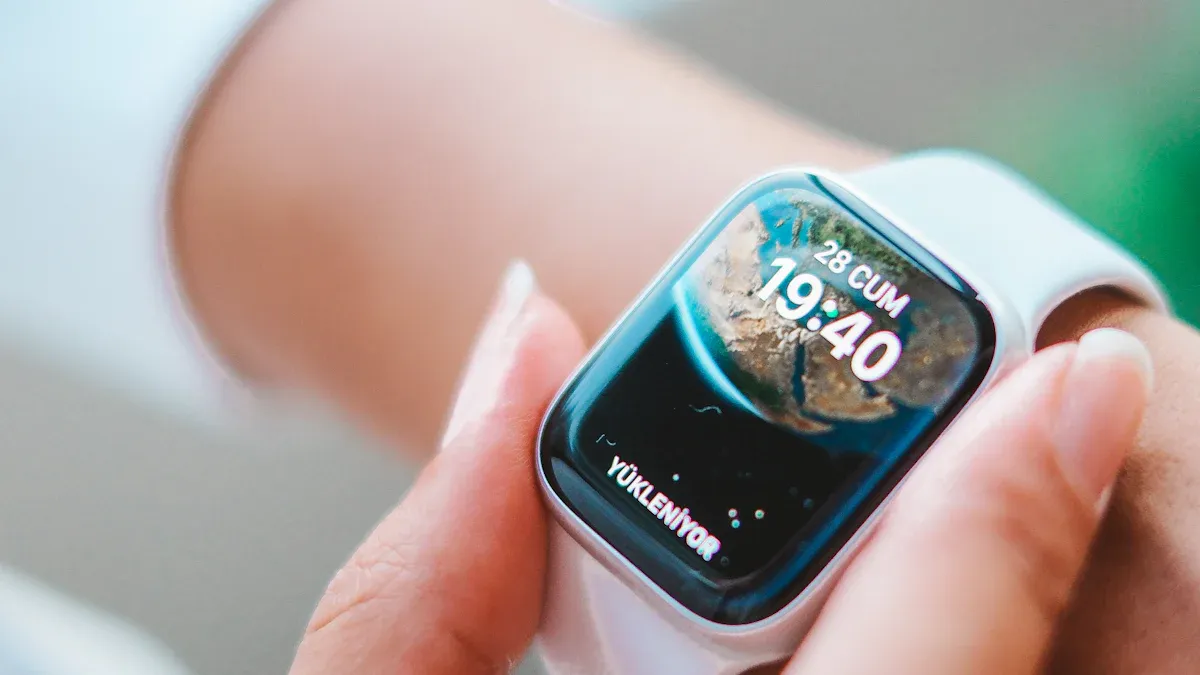
Injection molding has revolutionized the creation of lightweight and functional wearables. Micro injection molding, in particular, enables the production of micro-sized components with exceptional quality and precision. This process supports miniaturization while enhancing the functionality of wearable technology. For example, the global micro injection molding market, valued at USD 1.2 billion in 2023, is projected to grow at a 9.5% CAGR, reaching USD 2.8 billion by 2032. This growth highlights its critical role in manufacturing advanced medical devices and electronics that prioritize comfort and usability.

Micro moulding plays a vital role in reducing the weight of wearable devices. When you think about wearables, lightweight designs are essential for comfort and practicality. Micro moulding allows manufacturers to create tiny components that weigh less but still maintain their strength and durability. This process ensures that wearable technology remains functional without adding unnecessary bulk.
For example, in medical devices like fitness trackers or heart rate monitors, micro moulding enables the production of compact parts that fit seamlessly into the design. These components contribute to the overall portability of the device, making it easier for you to wear them throughout the day.
Tip: Lightweight wearables are not just about convenience. They also improve the user experience by reducing fatigue during extended use.
Micro moulding achieves weight reduction by using advanced techniques to minimize material usage while maintaining the structural integrity of the components. This balance is crucial for ensuring that wearables remain reliable and efficient.
Comfort is a key factor in wearable technology, and micro components are designed with this in mind. Smaller parts mean less bulk, which translates to a more comfortable fit. Whether you're wearing a smartwatch or a pair of smart glasses, micro moulding ensures that the components are compact enough to enhance usability.
Micro moulding also allows for precise customization of components. This precision ensures that wearable devices fit snugly and adapt to your movements. For instance, in electronics like wireless earbuds, micro components contribute to ergonomic designs that stay secure without causing discomfort.
In addition to comfort, micro moulding improves the functionality of wearable devices. Smaller components enable advanced features like sensors and processors to be integrated into the design without compromising usability. This innovation is particularly important in medical wearables, where accuracy and reliability are critical.
Note: Wearable technology relies on micro moulding to strike the perfect balance between comfort and functionality, ensuring that devices meet your needs without sacrificing performance.
Micro injection molding technology relies on advanced techniques to achieve high precision in creating micro-sized components. These techniques ensure that every part meets strict quality standards, which is essential for wearable devices. You benefit from this precision because it guarantees that the components in your wearables function reliably and fit perfectly.
One key method involves meticulous measurement and inspection. Manufacturers use automated systems to measure and inspect each component during production. This reduces errors and ensures consistency. Automation and end-of-arm tooling also play a significant role. These tools minimize human error and improve the efficiency of the manufacturing process.
Another critical technique is scientific molding. This process uses data analysis to optimize parameters like temperature and pressure. By fine-tuning these variables, manufacturers can produce components with tight tolerances and minimal defects. In-mold sensors and monitoring systems further enhance accuracy. These sensors provide real-time feedback, allowing for immediate adjustments during production.
These techniques ensure that micro injection molding technology delivers the precision needed for wearable devices. Whether it's a fitness tracker or a medical device, you can trust that the components are accurate and reliable.
The machinery used in micro injection molding is just as important as the techniques. Advanced machines are designed to handle the unique challenges of manufacturing micro components. These machines feature high-resolution controls that ensure consistent and accurate production.
High-speed machining techniques are one example of how technology has improved precision. These techniques allow manufacturers to create intricate designs with minimal errors. Micro-machining processes also use specialized tools to achieve the fine details required for wearable components.
Materials used in tooling have also advanced. Polycrystalline diamond (PCD) is a popular choice because it offers durability and precision. This material ensures that molds can withstand the demands of micro injection molding without losing accuracy.
Other innovations include laser micromachining and micro-EDM (Electrical Discharge Machining). Laser micromachining uses non-contact material removal, which reduces tool wear and speeds up production. Micro-EDM provides high accuracy while minimizing tool wear, making it ideal for creating complex micro components.
These advancements in machinery ensure that micro injection molding technology can meet the demands of modern wearable devices. You benefit from these innovations through wearables that are lightweight, durable, and packed with features.

Polymers play a crucial role in creating lightweight and durable wearable components. These materials offer versatility, making them ideal for various applications. For example, polyurethanes are known for their durability and comfort. They are commonly used in sports gear and wearable medical devices. Fluoroelastomers, on the other hand, provide excellent resistance to heat and chemicals, making them suitable for industrial wearables used in harsh environments.
Graphene and nanomaterials represent the future of wearable technology. Their high electrical conductivity and strength make them perfect for next-generation devices like bio-monitoring systems. Hybrid materials combine multiple properties, offering enhanced performance for diverse wearable applications.
| Material Type | Key Properties | Application Areas |
|---|---|---|
| Polyurethanes | Versatile, durable, comfortable | Sports gear, wearable medical devices |
| Fluoroelastomers | Excellent heat and chemical resistance | Industrial wearables in harsh conditions |
| Graphene & Nanomaterials | High electrical conductivity, strength | Next-generation wearables, bio-monitoring |
| Hybrid Materials | Combination of properties for enhanced performance | Diverse wearable applications |
When selecting materials, you should consider the specific needs of your wearable. For example, a fitness tracker might require lightweight polymers, while industrial wearables might need materials that can withstand extreme conditions.
Flexibility and strength are essential for wearable components. Flexible materials ensure that the device adapts to your movements, providing comfort during use. At the same time, strength guarantees durability, so the wearable can withstand daily wear and tear.
Micro moulding allows manufacturers to achieve this balance by using advanced materials. For instance, ultra-thin components made from hybrid materials can offer both flexibility and strength. These components are ideal for wearables like smartwatches and wireless earbuds, where comfort and durability are equally important.
Material selection also impacts the overall quality of the wearable. High-quality materials ensure that the device performs reliably over time. For example, using durable polymers in micro moulding helps create components that maintain their shape and function, even with frequent use.
By carefully balancing flexibility and strength, you can enjoy wearables that are both comfortable and long-lasting. This balance is especially important for medical devices, where reliability and comfort are critical.
Designing molds for micro components presents unique challenges. Achieving dimensional accuracy is one of the most critical aspects. Micro-sized components require precise measurements, but even minor deviations can affect their performance. For example, variations in ambient light can impact the accuracy of colorimetric sensors, making data collection and interpretation difficult.
Material properties also play a significant role. The choice of materials directly affects the quality and durability of the molded parts. For instance, frozen layers and temperature gradients during the molding process can lead to defects. These issues become more pronounced when working with thin-wall designs, such as drug delivery cannulas.
| Challenge | Description |
|---|---|
| Dimensional Accuracy | Achieving precise dimensions in micro-sized components is critical and challenging. |
| Material Properties | The choice of materials affects the performance and quality of the molded parts. |
| Molding Process Complexities | The intricacies of the molding process can lead to issues such as frozen layers and temperature gradients. |
Micro mold design also faces cost-related challenges. Traditional methods for producing thin-wall cannulas are expensive and inefficient. Companies like Accumold have addressed this by developing single-piece molded cannulas, which reduce costs and improve safety.
Tip: Overcoming these challenges requires innovative approaches and advanced technologies tailored to micro manufacturing.
Precision and efficiency are essential for creating high-quality micro components. One effective solution involves using Design of Experiments (DOE) and simulation. These tools help optimize process parameters, reducing cycle time and minimizing shrinkage. This approach ensures that components meet strict quality standards.
Rapid Heat Cycle Molding (RHCM) is another innovative technique. It enhances surface quality and eliminates weld lines, making it ideal for high-gloss parts. Conformal cooling channels also improve efficiency by following the mold's contours. This design, enabled by additive manufacturing, ensures faster cooling and better part quality.
Energy-efficient machinery further enhances the manufacturing process. For example, all-electric presses reduce energy costs while improving processing speed. These advancements not only boost efficiency but also support sustainability.
By adopting these solutions, you can ensure that wearable devices feature reliable and precise components. These innovations make it possible to produce lightweight, durable, and functional wearables that meet the demands of modern technology.
Emerging technologies are transforming micro injection molding into a more versatile and efficient process. These advancements are enabling the production of intricate components for wearable devices with unmatched precision. For example, innovations in material science, such as biocompatible polymers and micro powder injection molding (μPIM), are expanding the possibilities for creating lightweight and durable wearables. You can now enjoy devices that are not only functional but also safe for prolonged use.
Hybrid processing technologies are another exciting development. By combining micro moulding with 3D printing, manufacturers can produce continuous fiber-reinforced composites. This approach enhances part quality and performance, making it ideal for applications in healthcare and electronics. Additionally, advancements in microfluidics and lab-on-chip systems are opening new doors for miniaturization, allowing wearable technology to become even more compact and efficient.
The market for micro injection molding technology is growing rapidly. It is projected to increase from $25.12 billion in 2025 to $72.64 billion by 2034, with a compound annual growth rate (CAGR) of 12.52%. This growth reflects the rising demand for precision components in sectors like medical, automotive, and electronics. As these technologies evolve, you can expect wearables to become more advanced and accessible.
Sustainability is becoming a key focus in micro injection molding. Manufacturers are adopting processes that reduce material waste while maintaining high-quality standards. For instance, energy-efficient machinery is now a standard in the industry. These machines not only lower energy consumption but also improve production efficiency, ensuring that wearable devices are both eco-friendly and cost-effective.
The use of biodegradable materials is another significant trend. Polymers derived from renewable sources are gaining popularity for their ability to decompose naturally, reducing environmental impact. Hybrid materials, which combine the properties of multiple substances, are also being developed to enhance both performance and sustainability.
Micro moulding plays a crucial role in these efforts. By using advanced techniques, manufacturers can minimize material usage without compromising the strength or flexibility of the components. This approach ensures that wearables remain lightweight and durable while aligning with global sustainability goals. As a result, you can enjoy innovative devices that are not only cutting-edge but also environmentally responsible.
Note: The shift toward sustainable materials and processes in micro injection molding is paving the way for a greener future in wearable technology.
Micro injection molding has become a cornerstone in the creation of lightweight and precise wearable devices. Its ability to produce small, high-quality components ensures that wearable technology remains functional and comfortable. You benefit from this process through devices that are compact yet durable, whether for medical applications or everyday use.
The growing demand for miniaturization has driven innovation in micro injection molding. Advanced technologies now allow manufacturers to create intricate parts with exceptional functionality and quality. This trend highlights the importance of micro injection molding in meeting the needs of modern wearables.
Future advancements will continue to enhance the efficiency and design of wearable technology. As innovation progresses, you can expect devices to become even more lightweight, reliable, and feature-rich.
Note: Micro injection molding ensures that wearable technology evolves to meet your expectations for comfort, precision, and performance.
Micro injection molding creates miniaturized parts with high precision manufacturing. It is essential for wearables because it produces lightweight, durable, and functional components like miniature sensors and implants, ensuring comfort and usability.
This process uses biocompatible materials to create micro medical devices and implants. These materials are safe for prolonged contact with the human body, making them ideal for drug delivery systems and other medical applications.
Polymers, hybrid materials, and advanced composites are commonly used. These materials balance flexibility, strength, and biocompatibility, ensuring wearables like miniature electronic components and medical devices perform reliably.
Yes, it can produce precise and miniaturized parts for drug delivery systems. These components ensure accurate dosing and seamless integration into wearable medical devices.
Miniature sensors enhance functionality by enabling features like health monitoring and environmental tracking. Their small size ensures wearables remain lightweight and comfortable while delivering advanced capabilities.